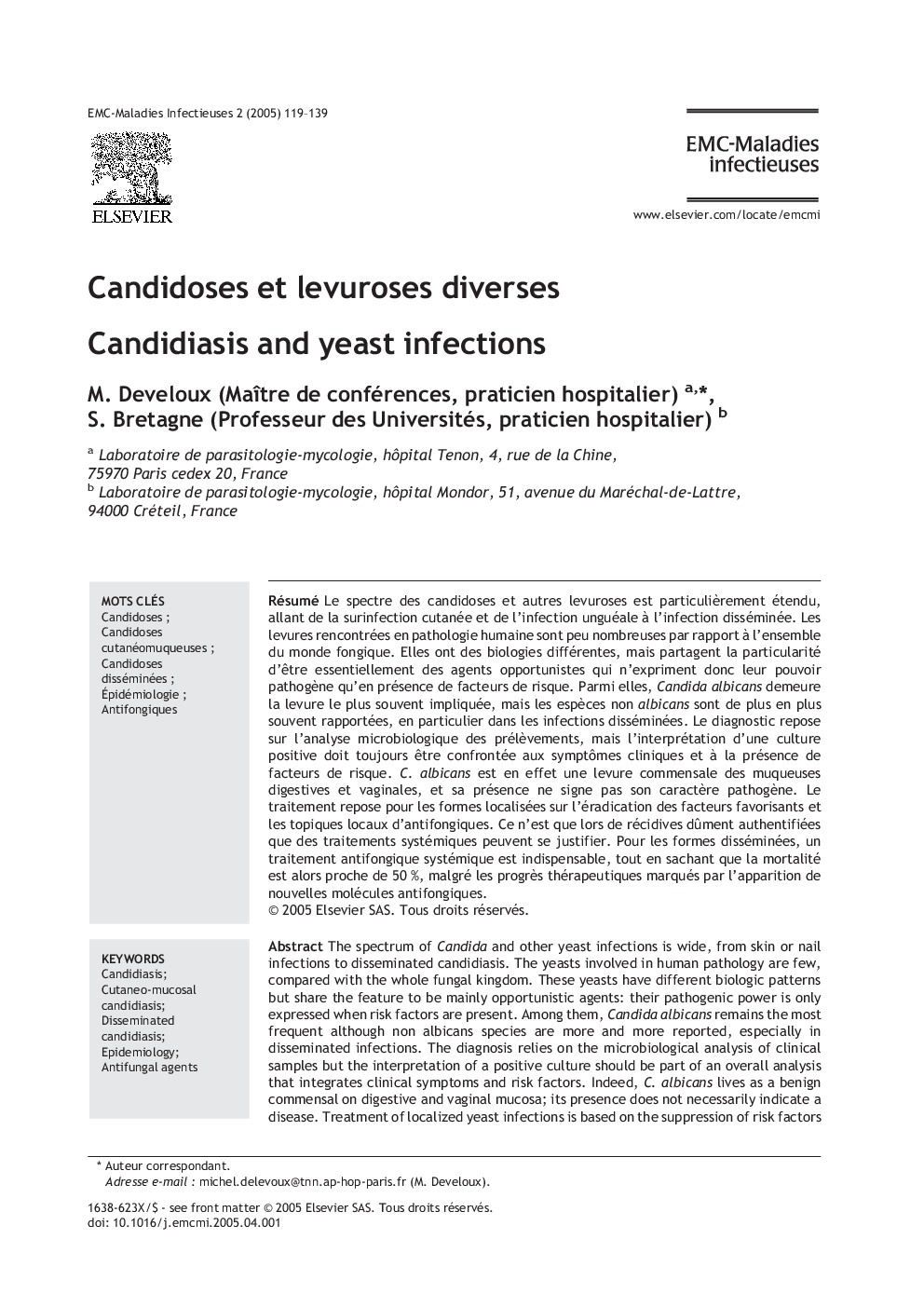| Article ID | Journal | Published Year | Pages | File Type |
|---|---|---|---|---|
| 9277083 | EMC - Maladies Infectieuses | 2005 | 21 Pages |
Abstract
The spectrum of Candida and other yeast infections is wide, from skin or nail infections to disseminated candidiasis. The yeasts involved in human pathology are few, compared with the whole fungal kingdom. These yeasts have different biologic patterns but share the feature to be mainly opportunistic agents: their pathogenic power is only expressed when risk factors are present. Among them, Candida albicans remains the most frequent although non albicans species are more and more reported, especially in disseminated infections. The diagnosis relies on the microbiological analysis of clinical samples but the interpretation of a positive culture should be part of an overall analysis that integrates clinical symptoms and risk factors. Indeed, C. albicans lives as a benign commensal on digestive and vaginal mucosa; its presence does not necessarily indicate a disease. Treatment of localized yeast infections is based on the suppression of risk factors and the use of topic antifungal agents. In case of well-documented reoccurrences, systemic antifungal drugs may be proposed. For disseminated infections, a systemic antifungal agent is mandatory; in such cases, the associated mortality remains high, close to 50%, despite the recent development of new antifungal molecules.
Keywords
Related Topics
Health Sciences
Medicine and Dentistry
Infectious Diseases
Authors
M. (Maître de conférences, praticien hospitalier), S. (Professeur des Universités, praticien hospitalier),
